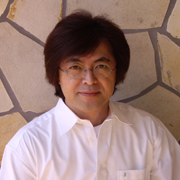Erroneous Assessment of The Effect of Hospital Treatment – The Misleading Creation of 17000 Deaths and its Consequences for Good Medical Practice
Author(s): Xavier Azalbert, Véronique Baudoux, Alexis Lacout, Valère Lounnas, Martin Zizi, Corinne Reverbel, Gérard Maudrux, Jean-François Lesgards, Christian Perronne
Despite a peer review process prior to being published in Biomedicine & Pharmacotherapy, Pradelle et al, “Deaths induced by compassionate use of hydroxychloroquine (HCQ) during the first COVID-19 wave: an estimate” is cluttered with several scientific integrity issues, one of them being the lack of validation against real life data. Mathematical model-based research should be dealt with an even greater care by reviewers and call upon mathematicians for a review of the logic and appropriateness of the model used. This is illustrated here by the use of an odds ratio (OR) taken as the corner stone of a circular reasoning based on a simple mathematical extrapolation without cross validation against reality and without appraisal regarding the corpus of knowledge amply developed and published on the topic addressed. This resulted in a blind and oversimplistic mathematical treatment of an issue of the foremost importance.
A flawed model by design has yield results that can be viewed as a pure fabrication. The OR used is not an accurate representation of the true OR associated with the treatment involved. It was based on the result of a meta-analysis that included only RCT trials with OR exceeding 1. with the two trials with an over-dominating weight having used excessively high doses of HCQ: the Recovery and Who Solidarity trials with weight of 73.7 % and 15.2%, respectively. Recovery was conducted on frail patients hospitalized at a very late disease stage and having received sub-lethal doses of HCQ, very close to the lethal dose, dramatically higher than the safe dosage established by the pharmacokinetics properties of HCQ.


 Impact Factor: * 3.5
Impact Factor: * 3.5 Acceptance Rate: 71.36%
Acceptance Rate: 71.36%  Time to first decision: 10.4 days
Time to first decision: 10.4 days  Time from article received to acceptance: 2-3 weeks
Time from article received to acceptance: 2-3 weeks 
